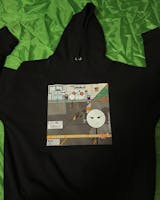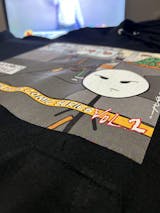Compliance and regulations in DTF printing cover the interconnection and integrity of operations in the printing process. Compatibility and regulations in printing are very important in order to implement and observe various details such as the quality, durability and color harmony of the products in printing processes. Various arrangements need to be made to increase the quality of the prints, create extraordinary print designs and reveal vibrant colors. As a result of these arrangements, perfect designs are obtained without any errors in printing.
The reliability of materials, one of the issues that are included in the compatibility in printing, is an important issue for print quality. Particularly choosing environmentally friendly products and materials ensures ongoing compatibility in printing. At the same time, the compatibility of the inks used in printing highlights the quality of the printing. Correct product use and ink compatibility helps the print achieve a unique appearance. Compatibility of all materials during the printing process ensures that the work progresses more easily and in a planned manner. Being planned during the print production process contributes to saving more time and speeding up the production process.
Reliability and Quality of Prints
Choosing reliable materials for DTF printing starts with leaving behind the chemical components used. In these steps, inks containing natural ingredients instead of chemical ingredients do not pose any risk factors to both the environment and human health. By ensuring that the materials in printing are environmentally friendly and produced in a compatible manner, creating waste to the environment is prevented. The quality and reliability of the prints also depends on the quality of the materials. Therefore, choosing a reliable product contributes to the creation of a clean environment by protecting both the environment and people.
DTF prints created thanks to reliable materials and quality products are transferred to various surfaces. The fact that the textile products to be used on the transferred surface for this process are suitable for recycling makes the products reliable and allows the printing to be produced in an environmentally friendly manner. Recyclable fabrics prevent waste production and eliminate risk factors for the environment. Thanks to a correctly adjusted system, the fabric surface on which the DTF print will be transferred is important in every sense. Prints transferred to recyclable fabric surfaces with DTF transfer are important for the sustainability of the environment.
Quality and Durable Dtf Printing Designs
In DTF printing processes, aesthetic appearances in accordance with the quality of the designs and color planning are achieved. Thanks to the materials used in printing, the durability of the print is taken into consideration and long-lasting prints are obtained. Quality is always important in design prints. Especially in colorful and detailed print designs, quality materials are preferred by taking precautions against cracking or deterioration of the prints. Thanks to the quality of the inks suitable for the fabric surface, the prints are long-lasting and resistant to cracking.
If any problems occur in the prints, the problem is detected and the prints are repeated with trial prints or control stages to prevent errors in the next stage. In this process, it is necessary to have equipment and printing plans ready in order to produce quality printing. If a professional design is created during printing planning, support from a designer is provided to ensure that the plans proceed correctly. In this way, prints with high quality and aesthetic appeal are produced successfully at the end of all steps. As a result of successful production, quality products are offered to businesses and companies by serving them with the right product printing design.








